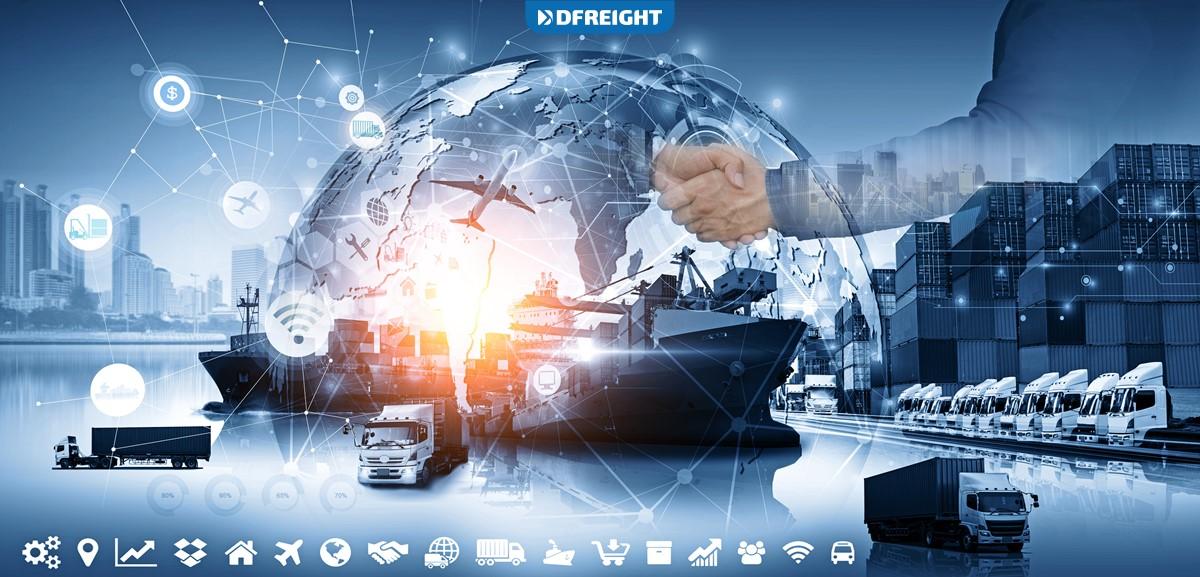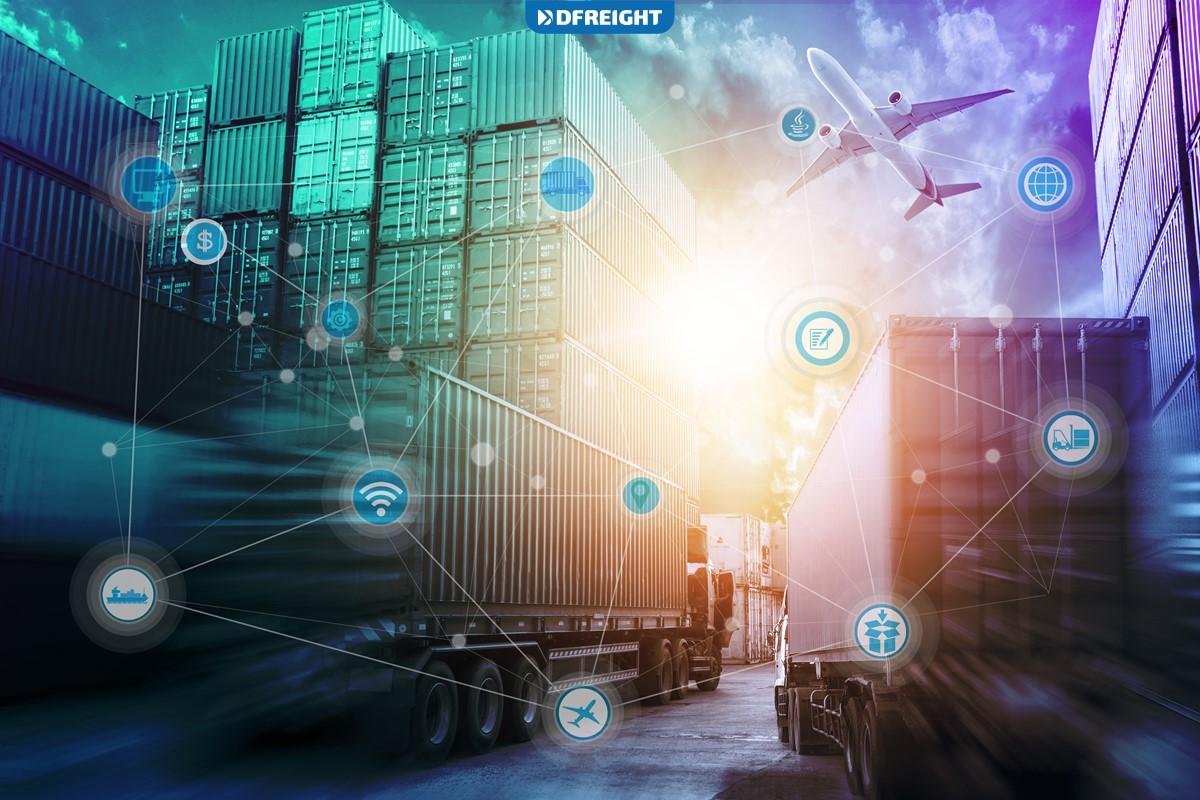There is little question that the shipping and supply chain sectors will be quite different from what they are now in a future filled with extremely precise sensors and intelligent robots. The world of shipping will undoubtedly reach new heights of efficiency and precision if every freight truck, piece of storage equipment, and package is connected to the Internet. That is what the miracle of the IoT is enabling us to do—to use the capacity of our resources to the fullest without the risk of mistake.
IoT is reshaping the way we live, move, and transport, and that’s an inevitable challenge for any shipping and logistics company to take. If you’re ready for that and are wondering how it will boost your business in the shipping industry, just keep on reading to get an enlightening clue.
Table of Contents
An Introduction to IoT
The “Internet of Things” is a system of interconnected devices and sensors that can collect and exchange data. IoT devices are connected to the internet and can communicate with each other and be controlled remotely. The data collected by these devices can be used to monitor and control a variety of devices and systems, from home appliances to industrial machinery. The data can also improve efficiency, optimize operations, and create new services and applications.
The Internet of Things has the potential to transform the world around us in a variety of ways. It can improve efficiency by automating tasks and processes as well as optimizing operations by collecting data and using it to improve decision-making. It can also create new services and applications that make our lives easier, more pleasurable, and more connected.
The Internet of Things can also help to improve the quality of life for people with disabilities. For instance, networked devices can be used to create a “smart home” that can be controlled remotely, making it easier for people with limited mobility to live independently. Additionally, the data collected by IoT devices can be used to make our cities and supply chain more sustainable and more efficient.
The Origins of IoT
The term “Internet of Things” was first coined by Kevin Ashton in 1999. Ashton was working on a project at the time that involved RFID tags, which are small chips that can be attached to objects to track them. He coined the term “Internet of Things” to describe the network of objects created by connecting these RFID tags to the internet.
The concept of the Internet of Things gained traction in the early 2000s as more and more devices were connected to the internet. In 2003, the first-ever “smart” home was built, equipped with various connected devices, from a fridge that could order groceries to a TV that could be controlled remotely.
The IoT has continued to grow in popularity in recent years, with more and more devices being connected to the internet. In 2016, there were an estimated 8.4 billion connected devices, and this reached the number of 20.4 billion in 2020. It is estimated that there will be 75 billion devices connected to the internet by 2025.
Why IoT Matters in Today’s World
The Internet of Things is transforming how we live, work, commute, transport, and play by enabling a new level of connectedness and intelligence. There are several reasons why the IoT matters in today’s world. First, it creates new opportunities for businesses and organizations to increase efficiency and optimize operations. Second, it enables a new level of insight and understanding of the world around us. Third, the IoT is creating new opportunities for people to interact with the physical world in novel and innovative ways. Finally, the IoT is helping to drive a new wave of economic growth and development.
The Impact of IoT on Transportation and Shipping

The Internet of Things will majorly impact the future of logistics, transportation, and shipping. One of the most significant applications of this breakthrough in transportation is asset tracking and management. The IoT can track the location of vehicles, containers, and other assets in real-time, which can help optimize shipping routes and improve the efficiency of transportation operations. In addition, the IoT can monitor the condition of vehicles and their cargo, which can help reduce the risk of accidents and damage.
Another important application of the IoT in transportation is in the area of traffic management. The IoT can be used to collect data about traffic patterns and congestion, which can help to improve the flow of traffic and reduce congestion. Moreover, the IoT can monitor the condition of roads and infrastructure, which can help improve transportation operations’ safety.
Top 6 Use Cases of IoT in the Shipping Industry
Internet of Things may provide shipping companies a wide range of benefits that ensure the process will be efficient and successful, increasing customer satisfaction. Shipping firms can keep everything under control and ultimately increase their efficiency with the help of IoT-enabled technologies. Here are just 6 IoT use cases that might positively impact the transportation sector.
1. Monitoring Temperature-Sensitive Environments
Appropriate temperature controls are crucial for some products, such as pharmaceuticals or perishable foods. These goods risk becoming inefficient or hazardous to use if placed in locations that do not adhere to their recommended temperature range.
Numerous linked devices equipped with IoT sensors can detect unfavorable environmental factors like dampness or extended heating. They then notify the appropriate parties about any issues that might compromise the quality of delivered goods.
These IoT-enabled solutions help increase a company’s visibility. When a customer reports spoiled products, the parties responsible for shipping them to their destination can examine the supply chain and use information from remote sensors to determine what went wrong.
2. Enhancing Inventory and Freight Management

Internet of Things (IoT) can enhance inventory and freight management in several ways. For instance, it can help reduce inventory levels by providing real-time information about the stock levels. This would allow businesses to order the required amount of stock, thus reducing the chances of overstocking or running out of stock.
IoT can also help track the movement of goods and vehicles. This would allow businesses to optimize their routes and schedules, thus reducing the overall transportation costs. In addition, it would also help reduce the lead time as the companies would be able to track the progress of their shipments.
Overall, IoT can provide several benefits for inventory and freight management. It can help businesses save costs, reduce lead time, and improve the overall efficiency of their operations.
3. Improving Cargo Tracking
IoT can track parcels throughout the shipping process, providing real-time updates on the parcel’s location and whether it is on schedule. This information can improve the shipping process’s efficiency and ensure that packages are delivered on time. Say, if a parcel is delayed, the shipping company can use IoT to track the parcel and determine the cause of the delay.
Additionally, IoT can monitor the condition of parcels during transit, providing data that can be used to improve the safety and security of the shipping process. For instance, if cargo is damaged during transit, IoT can be used to track it precisely and determine what exactly caused the damage.
4. Economizing Fuel Consumption and Engine Performance
Using IoT systems, vehicles delivering shipped goods could consume less fuel, boosting business profits. IoT hardware might eliminate a lot of the uncertainty surrounding what shipping businesses should do to decrease the amount of energy needed for operations.
One strategy is for land-based fleet management companies to spend money on sensor-driven performance monitoring programs. They could pick up on unfavorable driving behaviors like excessive speeding, abrupt stops, and starts, and accelerating hard into curves. Gas mileage may suffer as a result of these actions. Additionally, they might increase risks for other drivers on the road. Therefore, the first step in corrective coaching is identifying these problems.
Increasing cargo ship engine management is another IoT fuel-saving possibility. One option interfaces with the ship’s propulsion control system and, once a business completes an initial time to calibrate the system, results in an average fuel savings of 10 to 15 percent each day. The IoT, big data, and AI algorithms are all combined in that solution.
Moreover, advanced IoT technology can adjust the engine performance when there is heavy traffic on the roads or larger-than-normal waves in the water. Due to human error, mechanical failures are one problem that business leaders may be able to minimize by integrating IoT systems into their shipping vehicles.
5. Boosting Last-Mile Delivery Efficiency
The shipping business is constantly concerned with enhancing last-mile delivery. Customers usually complain when goods are delivered late. After a few disappointing experiences, many people lose their patience. That’s why logistics company decision-makers have investigated various high-tech options, such as drones and wheeled robots, to lessen last-mile issues.
While only delivering a small portion of all packages, according to one market study company, automated delivery technologies will bring in between $33 and $48.44 billion in revenue by 2030. However, for the foreseeable future, humans will continue to help with most last-mile deliveries. For instance, a cloud-based platform with sensors and IoT data may display managers the exact positions of all current delivery trucks, allowing them to make decisions that will assist drivers in avoiding impediments like traffic jams or road construction.
Moreover, looking at IoT data, a manager may discover that a driver frequently takes breaks that are much longer than permitted. After presenting the employee with the statistics, they might decide whether the incident was an accident or called for disciplinary action.
6. Enhancing Packaging Operations

IoT innovations are transforming the shipping industry for the better in terms of enhanced packaging processes. For instance, automated robots and other connected devices make it easier and faster to package and ship products. They can carry goods to various parts of a warehouse and facilitate the whole process of packaging for workers who put the goods in boxes. This process helps companies improve their productivity and save time.
0IoT systems can also guide workers on how to best prepare items for shipment. This capability is particularly beneficial for new employees or those unfamiliar with the packaging process of cumbersome items, perishables, or dangerous goods. Additionally, IoT equipment can help identify any packaging shortcomings along the supply chain. For instance, IoT systems enable workers to use correct amounts of protective material to make sure goods arrive at their destinations safely.
Besides, when customer complaints about issues like ripped boxes or the lack of labels designating fragile products increase, QC officials can quickly identify who failed to perform their responsibilities within the supply chain thanks to networked sensors. Overall, by improving efficiency and accuracy, IoT can help businesses better meet the needs of their customers.
Are You Ready for the IoT Revolution?
The Internet of Things (IoT) has revolutionized the shipping industry by providing real-time data that helps shippers optimize their operations. IoT-enabled devices, such as sensors and GPS tracking devices, provide data that can be used to track the location of assets, monitor environmental conditions, and even predict traffic patterns. This data can be used to improve the efficiency of shipping operations, reduce costs, and even improve safety. In the future, IoT will continue to transform the shipping industry by providing even more data and insights that can be used to improve operations.
Tracking freight will undergo a significant transformation thanks to the Internet of Things, which will also lower and eliminate solution costs. Both autonomous, remote-controlled vehicles and the broad usage of robots and networked sensors in big warehouses can amazingly reshape the logistics industry in the coming years.
Are you fully prepared to take the challenge of this mesmerizing digital transformation as a player in the supply chain and logistics industry? How are your cargo fleet and warehousing procedures equipped with the latest cutting-edge IoT systems? Please share your comments and experiences with us in the comments.
FAQs
What is the Internet of Things (IoT)?
IoT is a system of interconnected devices and sensors that can collect and exchange data. IoT devices are connected to the internet and can communicate with each other and be controlled remotely.
Why is IoT important?
The IoT is important because it can transform the way we live, work, and play by automating tasks and processes as well as optimizing operations by collecting data and using it to improve decision-making.
Who coined the term “Internet of Things”?
The term “Internet of Things” was first coined by Kevin Ashton in 1999 while working on a project that involved RFID tags, which are small chips that can be attached to objects to track them.
How can IoT affect the shipping industry?
It can track the location of vehicles, containers, and other assets in real-time, which can help optimize shipping routes and improve the efficiency of transportation operations.
What are the advantages of IoT for shipping?
It can provide many advantages for shipping, including monitoring temperature-sensitive environments, enhancing inventory management and cargo tracking, saving fuel, improving last-mile delivery, and enhancing packaging operations.














